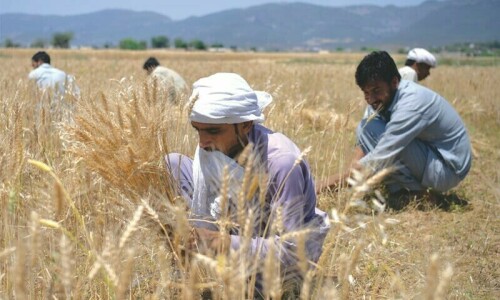WASHINGTON: There might be life on the Moon after all: thousands of virtually indestructible creatures that can withstand extreme radiation, sizzling heat, the coldest temperatures of the universe, and decades without food.
These terrifying-sounding beings aren’t aliens but instead microscopic Earthlings known as tardigrades, who likely made it out alive following a crash landing on the lunar surface by Israel’s Beresheet probe in April, the US-based organisation responsible for their trip said on Tuesday.
Based on an analysis of the spacecraft’s trajectory and the composition of the device the micro-animals were stored in, “we believe the chances of survival for the tardigrades... are extremely high,” said Nova Spivack, co-founder and chairman of the Arch Mission Foundation.
“Tardigrades are ideal to include because they are microscopic, multicellular, and one of the most durable forms of life on planet Earth,” he said. He added that the diminutive creatures, which are under a millimetre (0.04 inches) in size, had been dehydrated to place them in suspended animation, then “encased in an epoxy of Artificial Amber, and should be revivable in the future”.
The tardigrades were stored inside a “Lunar Library”, a nanotechnology device that resembles a DVD and contains a 30-million-page archive of human history viewable under microscopes, as well as human DNA.
Also known as water bears or moss piglets, tardigrades can live in water or on land, and are capable of surviving temperatures as high as 150 degrees Celsius and as low as minus 272 degrees Celsius, albeit for a few minutes.
The grub-like, eight-legged animals can come back from being dried out to a lifeless husk for decades, withstand near-zero pressure in outer space and the crushing depths of the Mariana Trench.
If they did not burn up in an explosion, they could in theory survive the tiny pressure on the lunar surface, and the extremes of temperature, William Miller, a tardigrades expert at Baker University, said.
“But to become active, to grow, eat, and reproduce they would need water, air and food,” so it would not be possible for them to multiply and form a colony, he added.
Nasa astrobiologist Cassie Conley said that their exact survival time would depend on the condition of the impact site and the temperatures to which they are exposed.
“If they don’t get too hot, it’s possible they could survive for quite a long time [many years],” she said.
Even if the creatures lived on for several years, there is no crewed mission to the Moon planned until Nasa’s Artemis programme in 2024 at the south pole — far from Beresheet’s crash site on the Sea of Serenity, so they probably won’t make it home.
“It is unlikely that they will be rescued in time, so my guess is that, even if they survived, they are doomed,” said Rafael Alves Batista, a physicist at Sao Paulo university who co-authored a 2017 paper on tardigrades’ extreme resilience.
Published in Dawn, August 8th, 2019













































